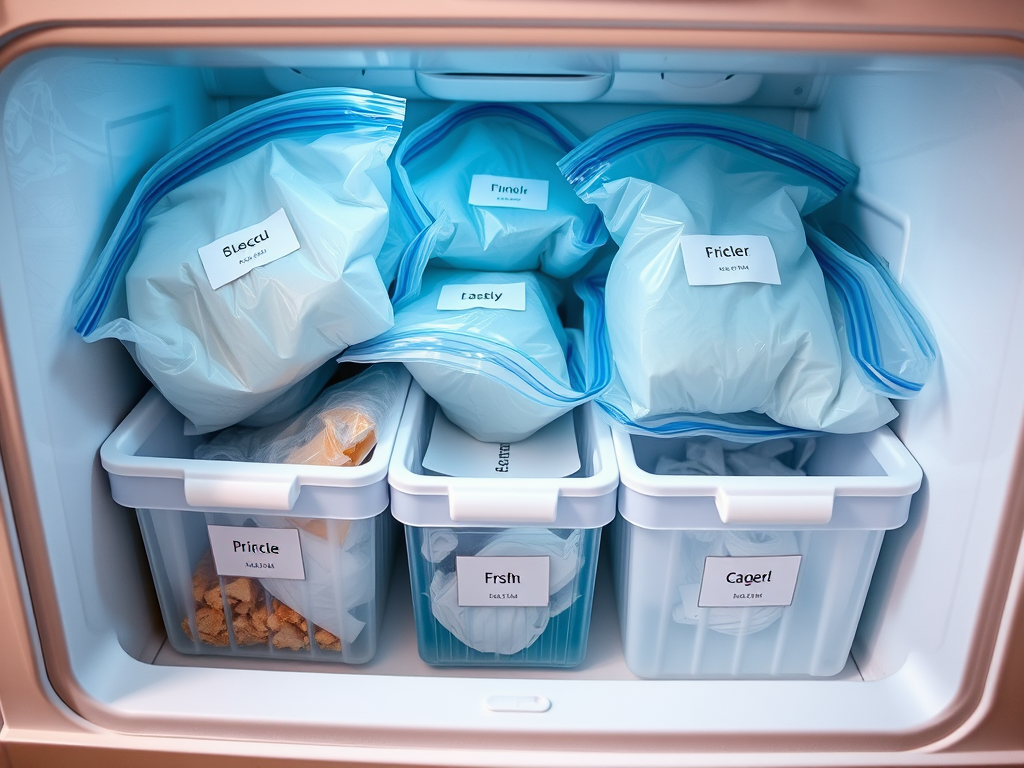Keeping your kitchen organized can feel like a never-ending battle, especially when it comes to managing a chest freezer. With the overwhelming number of items you may store—from meats to frozen fruits and prepared meals—it’s easy for chaos to take over. However, an organized chest freezer brings a plethora of benefits that extend beyond aesthetics. It enables you to locate your favorite foods quickly, saves time during meal preparation, and reduces food waste, ultimately benefiting your wallet and the environment.
The secret to achieving this level of efficiency lies in understanding the best practices for organization and maintenance. Imagine effortlessly pulling out a meal for dinner without rifling through a mountain of frozen goods. This article delves into the best practices for organizing and maintaining your chest freezer, ensuring you’ll no longer dread the task of finding what you need among the cold treasures stored within.
Understanding the Importance of an Organized Chest Freezer

Maintaining an organized chest freezer is crucial not just for efficiency but also for ensuring food safety and quality. An organized space reduces the risk of food spoilage by allowing you to easily identify items nearing their expiration date and helps keep your frozen goods in optimal condition. A well-maintained freezer also prevents odors and the growth of ice crystals, which can affect the taste of frozen food. Furthermore, an orderly setup will minimize energy consumption by enabling the freezer to operate effectively. In turn, this attention to organization can extend the lifespan of your appliance, saving you money on replacements over time.
Selecting the Right Location for Your Chest Freezer

Choosing the right location for your chest freezer is an often-overlooked aspect of its maintenance. While it may seem trivial, the placement of your freezer plays a pivotal role in how easy it is to access and organize your food items. First, consider the temperature control of the area. Ideally, your freezer should be situated in a cool, dry, and well-ventilated space, away from any heat sources, to maintain the optimal temperature. This will significantly impact its energy efficiency. Additionally, think about accessibility—select a location that allows for easy access while also enabling you to open the lid fully without obstruction.
Lastly, ensure that the flooring is solid and stable enough to support the full weight of the fully stocked freezer. Improper placement can lead to unexpected damage or failures that can disrupt your food storage plans. Taking the time to establish a solid foundation for your chest freezer will pay off in the long run, providing a reliable and efficient food storage solution.
Best Practices for Organizing Your Chest Freezer
When it comes to successfully organizing your chest freezer, implementing structured strategies can be a game changer. By creating categories for your food items, you’ll not only save time during meal prep but also prevent unnecessary food waste. One effective method is to categorize items such as meats, vegetables, and prepared meals. This approach keeps similar items together, allowing you to locate what you need within moments. Here’s a quick overview of categories you might consider:
- Meats: Group poultry, beef, and pork separately.
- Vegetables and Fruits: Store seasonal produce by type.
- Dairy Products: Keep ice cream, cheese, and frozen yogurt together.
- Prepared Meals: Label and group individual servings for easy access.
Utilizing storage containers and bins is another effective organization technique. Invest in clear bins to allow visibility of their contents, which will help you track what you have at a glance. Ensure you label everything clearly, including dates, to minimize confusion when reaching for items. Below is a simple table illustrating the types of containers you can use:
| Container Type | Best Use |
|---|---|
| Plastic Storage Bins | Grouping similar items for easy access and visibility |
| Freezer Bags | Freezing individual portions of food |
| Labeling Tape | Identifying contents and expiration dates |
By following these tips on categorization and containers, you can create a well-organized chest freezer that allows for easy access and efficient use of space.
Regular Maintenance Routine
A consistent maintenance routine is key to ensuring your chest freezer remains in top condition. This includes periodic cleaning and conducting inventory checks. Cleaning your chest freezer does require some effort, but it’s an essential part of maintaining a hygienic environment for food storage. Aim to clean your freezer every 3 to 6 months. Unplug the unit, remove all items, and use a mild detergent to wipe down all surfaces. This will eliminate odors and prevent mold build-up that can affect your food quality.
Inventory management can save you both time and money in the long run. Keeping track of what’s stored in your freezer is essential for preventing overbuying and ensuring you only keep what you need. Use a simple checklist to maintain an updated list of items in your freezer, noting expiration dates. By actively managing your inventory, you’ll reduce waste and keep your freezer organized and fresh.
Conclusion
In conclusion, maintaining an organized chest freezer is essential for maximizing its efficiency and ensuring food safety. The best practices we’ve discussed—selecting an appropriate location, categorizing items, utilizing bins, and sticking to a regular maintenance routine—will transform how you manage your freezer. By adopting these strategies, not only will you save time and reduce waste, but you’ll also create a more enjoyable cooking experience.
Frequently Asked Questions
- How often should I defrost my chest freezer? It is advisable to defrost your chest freezer when the ice build-up exceeds 1/4 inch.
- Can I store all types of food in a chest freezer? Most food types can be stored, but avoid freezing items with high water content that may become mushy upon thawing.
- What is the best way to label freezer items? Use freezer tape or labels that are waterproof and resistant to extreme temperatures.
- Should I leave space in the chest freezer? Yes, allowing space for air circulation is essential to maintain optimal freezing conditions.